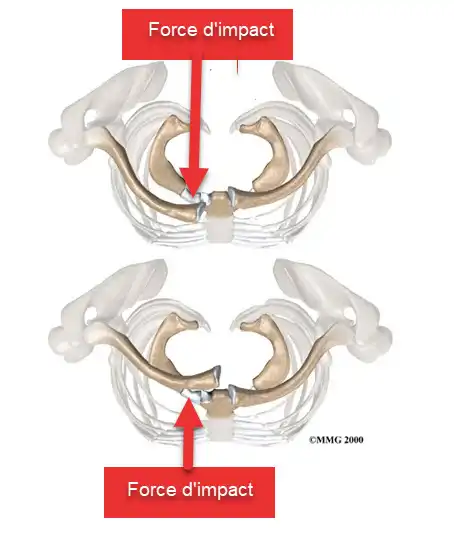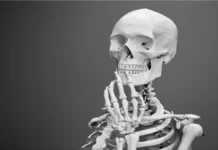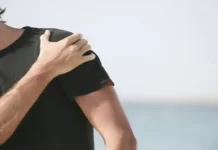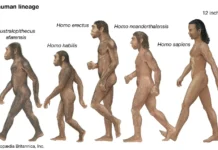Sternoclavicular dislocation represents the rupture of the sternoclavicular and costoclavicular ligaments following a direct trauma such as that of an automobile accident or contact sport such as football.
The sternoclavicular joint is a stable joint. The cause of these dislocations are as follows:
- Motor vehicle accidents 50%
- Sports injuries 20%
- Falls and others 30%
Anterior Dislocation: An impact force that is received posterior-anterior of the scapula will displace the sternal portion of the clavicle anteriorly.
Posterior dislocation: An impact force received anterior-posterior to the clavicle can displace the posterior sternal part towards the lungs, with danger of perforation. A posterior displacement is dangerous, because behind the sternum there are vital organs and tissues. Urgent help to put the collarbone back in place is needed.
Indirect force causes most injuries to the SC joint. Indirect force involves something hitting the shoulder very hard. The shoulder is pushed in and rolled forward or backward, which affects the SC joint.
Symptoms
The most common symptom of an SC joint disorder is pain in the area where the collarbone meets the breastbone.
Other signs and symptoms may include:
- Swelling, bruising or tenderness in the joint
- A cracking or grinding sound when you try to move your arm.
- Limited range of motion in the arm
- With an inflammatory disease, such as rheumatoid arthritis, you may experience simultaneous pain in other joints in your body.
- With a joint infection, there may be redness over the joint and you may experience fever, chills, or night sweats. If you experience any of the symptoms of a joint infection, it is important to seek medical attention immediately.




















